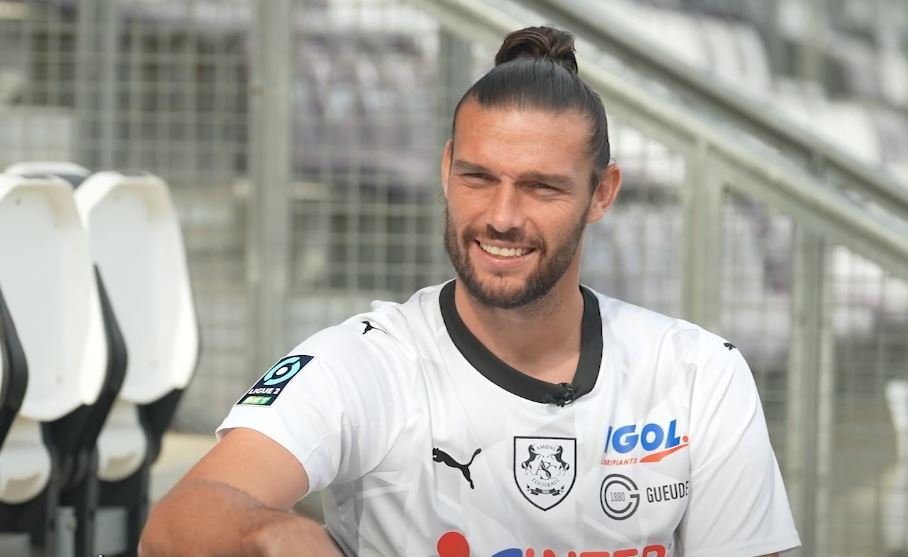
Compared to the typical sports millionaire story, Andy Carroll’s financial story has more layers. Not only did he score goals, but he also signed contracts that were abnormally long, broke records, and made headlines for bold and clever reasons. His estimated net worth of $25 million in 2025 is the result of both significant transfers and his ability to stay relevant in spite of a career that was heavily marred by injuries.
Carroll made history in 2011 when he shockingly moved from Newcastle to Liverpool for £35 million. He was more than just a bright young English striker at the time; he was a representation of exaggerated appraisals and hasty squad repairs. Few English players were able to reach that financial level so early in their careers thanks to that one transfer. He never really flourished at Liverpool, but the salary was guaranteed.
Andy Carroll Net Worth – Profile Summary
| Detail | Information |
|---|---|
| Full Name | Andrew Thomas Carroll |
| Date of Birth | January 6, 1989 |
| Age | 36 (as of 2025) |
| Height | 6 ft 4 in (1.94 m) |
| Position | Striker |
| Origin | Gateshead, England |
| Clubs Played For | Newcastle, Liverpool, West Ham, Reading, Amiens, Bordeaux |
| National Appearances | 9 caps for England, 2 goals |
| Last Club | Bordeaux (2024–2025 season) |
| Estimated Net Worth | $25 million (source: CelebrityNetWorth.com) |
| Off-Field Ventures | Endorsements, H&M modeling campaign, property investments |
| Notable Transfer | £35M move to Liverpool in 2011 – then a British transfer record |
Although not necessarily more productive, the financial narrative stabilized by the time he relocated to West Ham permanently in 2013. He received one of the club’s most generous packages when he agreed to a six-year contract worth an estimated £15 million. Even in times when he only made a few appearances because of frequent setbacks, his average weekly salary during those seasons was close to £80,000.
Despite those injury-plagued years, Carroll never completely disappeared from the earnings conversation, which is especially noteworthy. Even though his form faltered, his contract security made sure that his income remained mostly unchanged. Long-term contracts based on potential rather than consistency, particularly for physically demanding positions like his, are a larger problem in football.
Carroll’s choices, however, started to appear less monetary and more philosophical in recent years. His decision to relocate to Bordeaux in his late career, where he was only making €3,500 a month, appeared to be motivated more by self-discovery than ambition. He defined it as a wish to remain close to the game instead of lounging on the couch—a sentiment that is incredibly powerful at influencing public opinion.
Although they weren’t frequent, Carroll’s off-field activities were wise. He was able to diversify his sources of income through his work with H&M and real estate ventures, which is now especially advantageous for athletes who are nearing the end of their professional careers. Carroll maintained realism by investing, making selective campaign appearances, and maintaining a low media profile in recent years, in contrast to peers who start media companies or fitness brands.
It is impossible to overlook the ways in which his financial story and personal life interacted. Both tabloid traction and brand visibility were provided by his well-publicized relationship and subsequent marriage to Billi Mucklow. The listing of their £8.5 million Essex home after their 2024 split highlighted the financial reassessments that frequently accompany high-profile divorces. The situation highlights how lifestyle decisions, particularly shared ones, can have an equally significant impact on financial futures as professional ones, even though it is unclear how it will affect his net worth.
Carroll finds himself at an intriguing crossroads in the larger scheme of English football players of his time. He is a member of the same generation as players like Danny Welbeck, Jack Wilshere, and Jordan Henderson, whose careers took different turns due to luck, management, and injuries. Carroll, however, persisted in making small, deliberate moves while others faded or quietly transitioned: short-term contracts with Reading, a brief but symbolic stint in France, and an emotional return to Newcastle.
Even though he only scored six goals in 44 games for Liverpool and nine in his final season with Reading, his physical prowess and towering headers will live on in popular culture. Carroll was once described as “the best in the game at heading the ball” by former West Ham manager Slaven Bilić. Although this was an exaggerated statement, it perfectly encapsulated Carroll’s unadulterated influence on defenders.
It’s interesting to note that Carroll’s estimated net worth doesn’t change much after peak. Carroll’s stability in real estate and prudent investments allowed him to hold onto a sizable amount of his value, in contrast to other football players who experience steep drops following their final contracts. For young players who might not have a lot of time in the spotlight, this is especially encouraging because it demonstrates that early profits can be converted into long-term security with careful management.
Carroll’s financial profile stands out as being more restrained and thoughtful in a media landscape that is continuously fixated on Instagram-worthy wealth and flash. There were no private island purchases or super-yachts. Instead, he made sure that things continued. He made the move from stardom to sustainability with strategic contracts, sporadic endorsements, and domestic assets.
